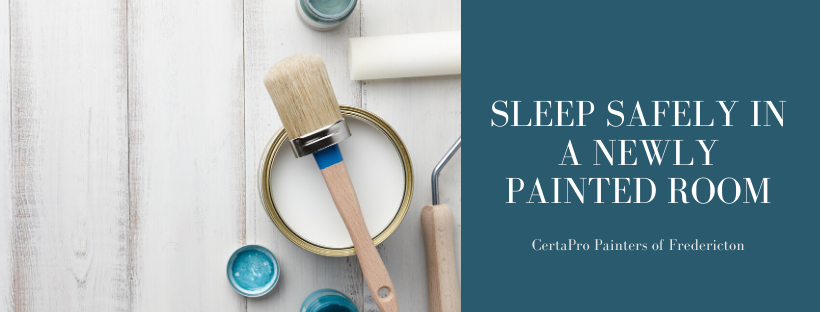
Sleep Safely in a Newly Painted Room
Posted on July 7, 2020
A new coating of paint is a good way to give the room a fresh feeling. Adding the wall coloring can be just the ticket for a refresh. Prepare for the project by learning how to sleep safely in a newly painted room.
If you chose to do the painting yourself, you’re surely ready to crash for the night. You could be harming your health, or the health of your family, by sleeping in the room before the fumes dissipate. Before you pick up a brush, learn these safe painting tips as part of your planning.
When you purchase paint, you will find that there are several types regarding VOCs. Manufacturers have traditional paint, low VOC and no VOC. VOCs are Volatile Organic Compounds released as the paint dries. Otherwise known as fumes. These smells can cause headaches, nausea and dizziness among other problems. Pregnant women, the elderly, small children and those with breathing problems are at the highest risk for issues. The chemicals can also affect development in young children and infants.
The Environmental Protection Agency has created levels of VOC emissions that are acceptable in paint products. Some state standards are even more stringent.
Choose low or no VOC paint options for the safest options while painting your room. Here are a few of the options available.
Latex paint in general has fewer VOCs than other types of paints because it is a water based paint.
Natural paints, while less sturdy, are more safe because they use ingredients such as casein, chalk, citrus oil and linseed oil instead of chemical bases. They do give off some VOCs and can cause irritation if those in your home have allergies to their ingredients. They may emit some VOCs, and if you’re sensitive to certain ingredients, such as citrus oil, a natural paint could still irritate you.
Oil paints are highly durable but also have the highest level of VOCs because of their chemical based make up.
Safe Painting Tips
Even when you are working with low or no VOC paints, ventilation is key to safety. From the moment you begin work, open windows and doors. If there is limited cross breeze, use fans to disseminate the smells. Leave the windows open until at least when you close the paint and if possible even longer.
Skin can absorb chemicals from the paint you’re using. Protect yourself with long sleeves, pants and gloves. This will help you clean up quicker too.
It’s safest to remove pregnant women and infants from the home while painting projects are happening. If possible, have them stay elsewhere until after the painting is complete and smells are whisked away. A study recently published in the Journal of Environmental Health has said that exposure to fumes during pregnancy and infancy can result in birth and developmental issues.
After you Paint
Some manufacturers say that it’s safe to sleep in a newly painted room within a few hours of painting. To be sure, allowing the room 24 hours to ventilate makes certain that any harmful fumes are gone and you can rest comfortably.
Schedule with us
Bringing in a crew means you can get your room painted faster. While they can’t move fumes along any quicker, completing the project sooner means you can move your timeline up. Schedule a free, no-obligation estimate appointment with our crews today.






